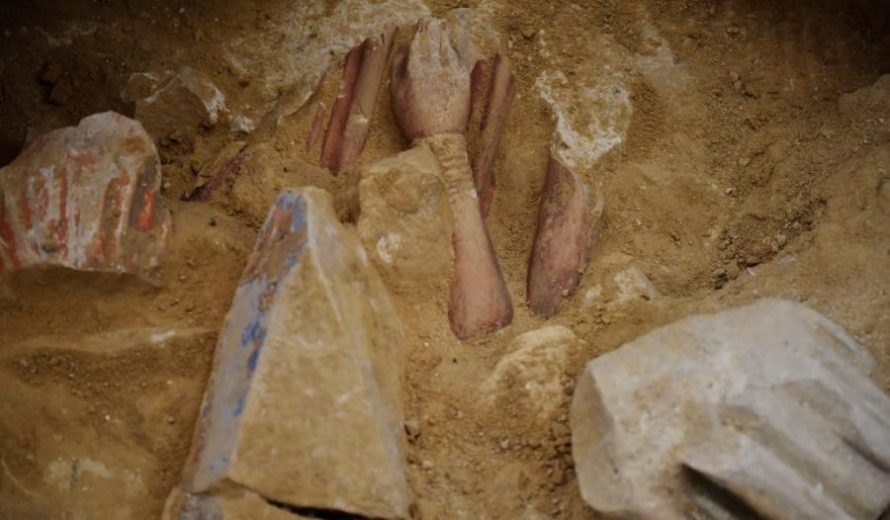Notre-Dame Repair Crews Discover an Ancient Graveyard With a Sealed Sarcophagus–
France’s culture ministry describes the finding as being “of remarkable scientific quality”
The following written content by Jane Recker
/https://tf-cmsv2-smithsonianmag-media.s3.amazonaws.com/filer_public/56/b5/56b593ba-0f4f-4fdd-a36b-aabfaef76542/gettyimages-1239210654.jpg)
Repair crews at the Cathedral of Notre-Dame in Paris, which tragically caught fire in 2019, discovered an ancient graveyard filled with tombs, including a “completely preserved, human-shaped sarcophagus made of lead,” reports Barbie Latza Nadeau of the Daily Beast. The sarcophagus was buried below the central nave, where crews were digging footing holes for the scaffolding needed to reconstruct the cathedral’s roof and spire that collapsed during the fire.
Archaeologists working at the site confirmed the finding, according to a statement from France’s culture ministry. In addition to the tombs and coffin, archaeologists also unearthed painted sculptures including the bust of an unidentified bearded man, carved hands and vegetables, parts of the original 13th-century rood screen—an ornate partition that separates the altar area from the nave,—as well as remnants of a 19th-century brick pipe underground heating system, reports the Agence France-Presse (AFP).
The lead sarcophagus had buckled from the weight of the church above it but was still sealed per the Daily Beast.
:focal(1500x1000:1501x1001)/https://tf-cmsv2-smithsonianmag-media.s3.amazonaws.com/filer_public/8d/ae/8daed1c0-5d51-4122-af10-d2859f6978c7/gettyimages-1239210759.jpg)
/https://tf-cmsv2-smithsonianmag-media.s3.amazonaws.com/filer_public/eb/f0/ebf02c9c-cdec-4883-a58c-ef780408f519/gettyimages-1239210491.jpg)
The culture ministry noted that the excavation site was under a stony layer that dates from the 18th century but that beneath it were levels that dated to as early as the 13th century, reports Lucien Libert for Reuters.
Using a tiny endoscopic camera, the team was able to peer into the sarcophagus and examine their find, described as being “of remarkable scientific quality” by France’s culture ministry. The body inside appears to be perfectly mummified, and archaeologists believe it was likely a senior dignitary buried in the 14th century, about 100 years after the construction of the cathedral, per the Daily Beast.
“You can glimpse pieces of fabric, hair and a pillow of leaves on top of the head, a well-known phenomenon when religious leaders were buried,” Christophe Besnier, the lead archaeologist, tells AFP. “The fact that these plant elements are still inside means the body is in a very good state of conservation.” Read more from Smithsonian.





